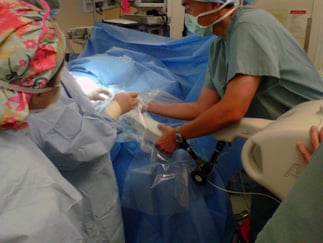Intraoperative Radiation Therapy (IORT)
Although surgeons can remove most of a breast cancer tumor through surgery, microscopic amounts of cancer can remain. To ensure those cancer remnants don’t grow or spread, breast cancer patients often undergo follow-up radiation treatment for as long as seven weeks after their surgery.
What is IORT?

A relatively new technique could make their post-surgery lives much easier. Called intraoperative radiation therapy, or IORT, this new form of radiation therapy replaces weeks of traditional radiation therapy. It’s administered in a single dose directly at the tumor site – and given at the same time as the surgery. For most patients, they will not require the normal daily radiation treatments that normally require six to seven weeks. It allows a woman to get her radiation and her surgery in one day.
Intraoperative radiation therapy can be especially beneficial to women with early-stage disease, but is still relatively unknown in some parts of the country. That is expected to change as doctors and insurers learn more about the technique.
In this procedure, after removing the tumor from the breast, the surgeon places a specially designed balloon in the space left by the tumor. The balloon is inflated, filling the space, and radiation is then delivered through a catheter directly to the former tumor’s site, where the risk of cancer recurrence is highest. The rest of the body is shielded during the procedure, protecting healthy tissue from damage. After about 15 minutes of treatment, the balloon and catheter are removed.
Unlike traditional radiation therapy, which is delivered after a patient has recovered from surgery, the new procedure kills tumor cells immediately, preventing them from growing further. The compact time of treatment can help patients return to their daily lives more quickly.
Learn more about our breast cancer and radiation oncology programs.